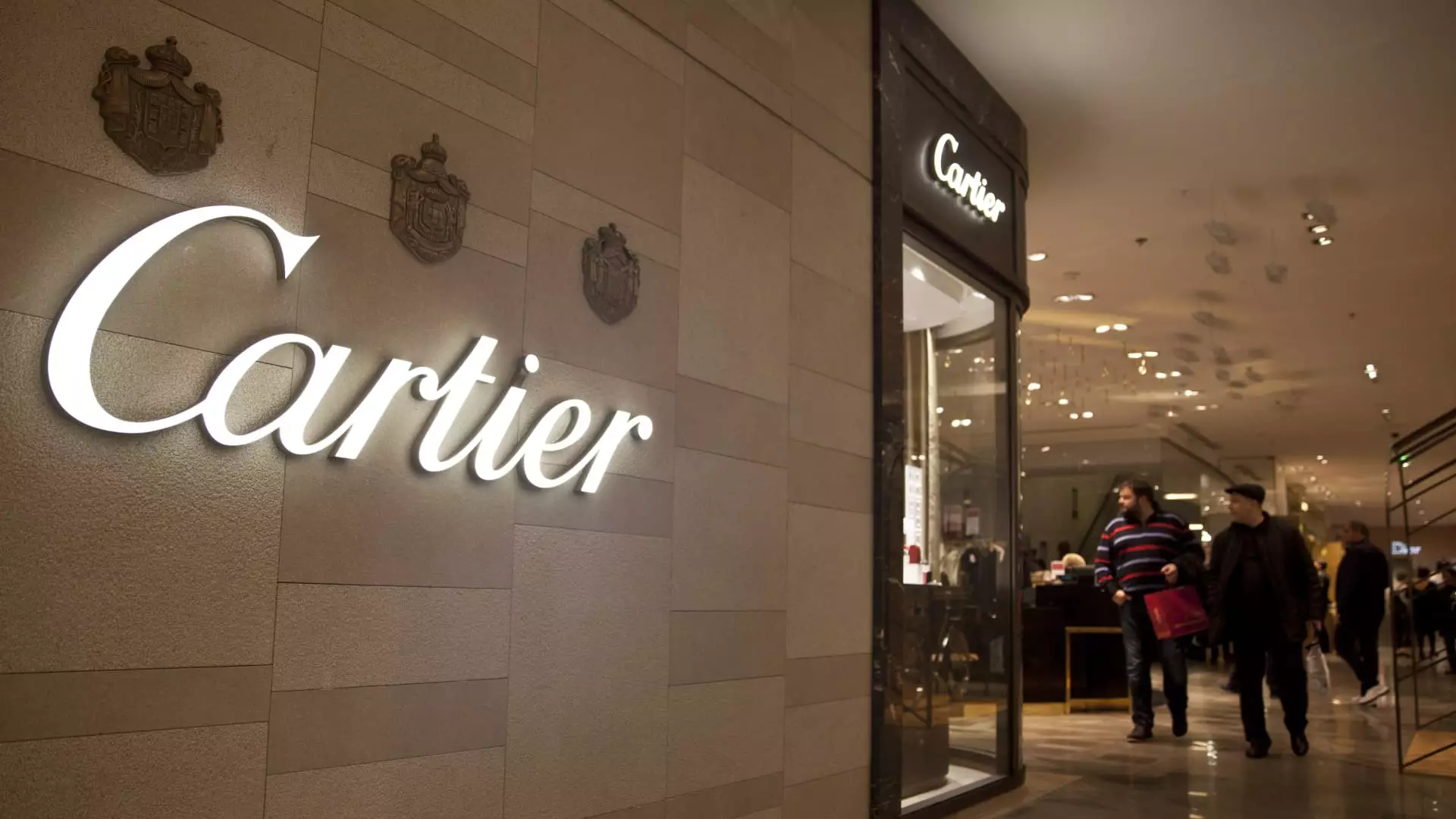Recently, shares of Richemont, the parent company of renowned brands such as Cartier, surged in value following the release of the group’s impressive fiscal third-quarter sales figures. The company reported a 10% growth compared to the previous year, achieving sales of 6.2 billion euros ($6.38 billion), a record high for a quarterly period ending December. Despite expectations for a modest increase of only 1%, as predicted by analysts from RBC, the results underscored a strong performance which was well above the anticipated figure. Upon the announcement, Richemont’s stock experienced a notable rise, climbing 17.15% shortly after the market opened in London.
While Richemont’s overall sales figures showed promising growth, the performance varied significantly across different regions. The company experienced notable double-digit growth in multiple markets; however, Asia Pacific saw a 7% decline, largely attributed to an 18% drop in sales within mainland China, Hong Kong, and Macau. Once considered a powerhouse in the luxury market, China has been grappling with economic challenges following the COVID-19 pandemic, leading to decreased consumer spending. This divergence in performance illustrates the complexities within the luxury sector, where regional economic conditions, particularly in Asia, can significantly impact overall company performance.
The surge in Richemont’s stock price can also be connected to broader market sentiments toward luxury goods companies. The positive sales figures from Richemont were mirrored in the performance of other key players in the luxury industry, such as Christian Dior, LVMH, and Hermès. These movements suggested a promising outlook for the luxury sector, especially during the critical holiday shopping season. The optimistic response from investors perhaps signals renewed confidence in the luxury market’s resilience amid ongoing economic challenges.
In addition to the positive sales figures, the appointment of a new CEO, Nicolas Bos, has likely contributed to enhanced investor sentiment. Bos, who previously managed Richemont’s prestigious Van Cleef & Arpels jewelry brand, has brought fresh perspective to leadership as the company navigates through a tumultuous time characterized by management shake-ups and volatility in the sector. Over the past year, Richemont has seen its share prices fluctuate dramatically, highlighting the challenges faced by luxury brands in maintaining stable growth.
The recent results indicate a potential rejuvenation for Richemont following a difficult first half of the fiscal year, where the company reported a slight 1% decline in sales due to an inhospitable macroeconomic environment and headwinds in China. Given that Richemont previously boasted record full-year sales in May, the recent growth is notable. Analysts, such as Luca Solca from Bernstein, regard the recent quarterly results as a positive harbinger for the broader luxury sector’s recovery. Solca suggests that substantial improvements in regional markets like Europe and the Americas — fueled by robust local demand and rising tourist inflows — signal a stabilization in the luxury market, potentially marking the previous quarter as the low point.
Richemont’s recent sales figures showcase not only the brand’s ability to bounce back despite adversities in specific regions but also underscore a wider trend of recovery within the luxury goods sector. As investor confidence surges alongside positive company performance, the emphasis on strategic leadership and adaptability in the face of economic challenges will be crucial for Richemont moving forward. By understanding these dynamics, stakeholders can better prepare for the evolving landscape of the high-end market and its varied consumer base across the globe.

